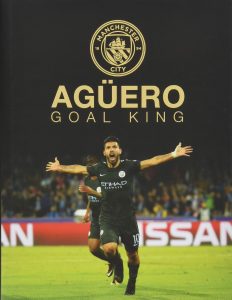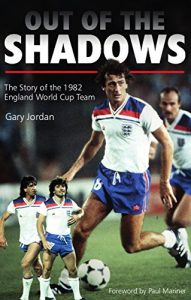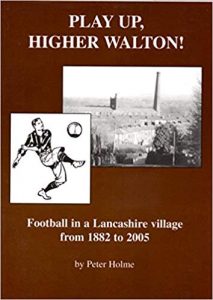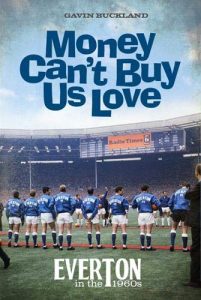 On 12 January 2020, Man City’s 6-0 win over Aston Villa may have seemed like just another day at the office for Sergio Aguero, but it marked an historic moment in the history-maker’s already dazzling career. Aguero’s second goal of the afternoon saw the Argentinian hero reach 176 Premier League goals – a feat that took him above Thierry Henry in the Premier League’s all-time scoring records to become the most prolific international striker in the League’s history and the fourth all-time leading scorer, with only Andy Cole, Wayne Rooney and Alan Shearer with better figures, though Andy Cole with just seven more goals than Aguero is clearly in the sharpshooter’s sight. A further goal piled on Villa’s woes but, more importantly for the Premier League history books, handed Aguero his twelfth league hat-trick and cemented a second momentous record in a record-breaking afternoon, overtaking Alan Shearer for the most league hat-tricks. Aguero’s goals per game record and efficiency are similarly second to none, and already this season he’s bypassed 250 total goals for Man City in all competitions, with, at the time of writing, 16 league goals to his name, and 24 in sum.
On 12 January 2020, Man City’s 6-0 win over Aston Villa may have seemed like just another day at the office for Sergio Aguero, but it marked an historic moment in the history-maker’s already dazzling career. Aguero’s second goal of the afternoon saw the Argentinian hero reach 176 Premier League goals – a feat that took him above Thierry Henry in the Premier League’s all-time scoring records to become the most prolific international striker in the League’s history and the fourth all-time leading scorer, with only Andy Cole, Wayne Rooney and Alan Shearer with better figures, though Andy Cole with just seven more goals than Aguero is clearly in the sharpshooter’s sight. A further goal piled on Villa’s woes but, more importantly for the Premier League history books, handed Aguero his twelfth league hat-trick and cemented a second momentous record in a record-breaking afternoon, overtaking Alan Shearer for the most league hat-tricks. Aguero’s goals per game record and efficiency are similarly second to none, and already this season he’s bypassed 250 total goals for Man City in all competitions, with, at the time of writing, 16 league goals to his name, and 24 in sum.
Aguero’s arrival at the Etihad in 2011 from Atletico Madrid coincided with Manchester City’s change in fortunes. Just twelve years ago they’d been struggling in the third tier of English football, but today they are one of the biggest names in the global game, and the enigmatic Argentinian has been at the forefront of this success. Indeed, whilst other strikers have come and gone at the Etihad, including Jo and Roque Santa-Cruz, Aguero has led the line for nine seasons. Though, in truth, he has not just led the line, he has dominated, taking The Citizens to a fourth league title and record 100 points haul last season and the cusp of European greatness. However, recent developments leave City’s future hanging in the balance and despite continuing to find the back of the net with enviable regularity, at the age of 31, Aguero’s reign in English football will not last forever. Whilst this will be a blessing for opposition fans, in truth, the Premier League without Aguero will be devoid of one of its all-time stars and for the blue half of Manchester it will mean saying farewell to a club record-breaker. For in 2017, Aguero’s unparalleled feats saw him break the club’s goalscoring record, which had stood for 78 years and was held by Eric Brook.
For fans wanting to reminisce and relive Aguero’s rise to the top of English football, the aptly titled Aguero Goal King underpins this modest striker’s achievements. Published after his record-breaking moment in 2017, the book takes readers through each of Aguero’s 178 goals, from his first against Swansea on 15 August 2011, to his 178th against Napoli on 1 November 2017. Split into seasons, each goal is marked by a brief description and an accompanying photo image.
The book kicks off with an introduction from the man himself, in which he acknowledges his own footballing role models, thanks his team-mates and expresses his desire to win the Champions League with City – a desire which, depending on the outcome of the current UEFA ban, may rest squarely on the current campaign if he is to fulfil his dream. Sadly, that is really as far as it goes with Aguero’s contribution, aside from brief pull-out quotes at the start of each season’s section. To my mind, it would have enhanced the book in having some additional quotes, even if only in the form of previous post-match comments from Aguero, dotted throughout, particularly charting important goals or moments.
Instead of Aguero’s first-hand commentary, the goals are described with standard journalistic vision. The descriptions are largely run-of-the-mill, after it all it’s fairly difficult to capture a goal in prose, but they all provide the basic information. This isn’t a gushing commentary or sycophantic hero-worship, but generally an objective account of each goal with some much-deserved praise thrown in where it’s due. Each goal is given the minute in which it was scored, the date and the opposition, as well as a trophy to indicate the competition, and although the summary explains how each was scored and score-lines in the match, a note of this information outside of the main text would have been nice to easily identify these matters. Similarly, pull-out facts about the goals would also have been a welcome addition. However, there is a very clear sense of a sleek and minimalist design to the book, and the emphasis is much more on imagery and iconography than text, which is understandable.
Supporting images, therefore, get pride of place in the book and readers can see Aguero grow up in front of their eyes across the pages from a fresh-faced Premier League unknown to one of English football’s most-feared marksmen. The imagery itself is a mixture of Aguero’s celebrations, action shots and goal snapshots, but in a sense, these too fail to really give the story of each goal. Indeed, single images cannot always capture the moment in full, and I did feel that montages of time-lapse imagery would have been beneficial at least for some of the goals. Indeed, each goal is given fairly similar treatment. Aside from double-page spreads for some of the more significant moments, sadly there is nothing that really gives those more important goals greater recognition or further exploration. Of course, all goals are important, but to paraphrase George Orwell, some goals are more important than others. Few would argue that amongst Aguero’s most important goals was the final one and thirtieth of his opening campaign with Manchester City against QPR on the last day of the season to clinch the club’s first title in 44 years and snatch the Premier League trophy away from rivals Manchester United, but this goal is not really given much more focus than any of the others. In my opinion, it would have been better for some goals, including those which had greater significance, to have had more pictures and information dedicated to them.
At the back of the book, there is a nice, if condensed, tribute to Eric Brook, but a few images of his goals would have been a welcome addition, although, admittedly, for a striker whose City career ran from 1928 to 1939, such images may have been hard to come by! The book concludes with a double-page spread of Aguero’s statistics, with breakdowns of those who assisted his 178 goals, how they were scored, and an interesting graph from 1 to 90 to show in which minute they were scored. Looking at the bar chart, the only hope for any opposition is that Aguero makes a three-minute cameo in the 55-57th minute or a two-minute cameo in either the 11-12th minute or 38-39th minute – the only times in a match during his 178-goal spree that he didn’t score. However, fans beware of the 69th or 90th minute when Aguero bagged seven goals apiece. Although, in truth, at his glorious best, Aguero possesses the ability to score at any time, by any means.
One stat that is missing from these pages is his breakdown of goals per opposition, which I suspect some teams may be thankful for – aside from Bolton, who, at the time of writing, of all Premier League opponents he has faced, are the only side he hasn’t scored against. What is all the fuss about Sergio Aguero, they may wonder. Whilst it wouldn’t perhaps be the easiest of reading for opposition fans, it would have been useful and interesting to have this breakdown. Similarly, there is no breakdown of goal hauls, i.e. the number of single goals, braces, hat-tricks, and (sorry, Newcastle fans) five-goal hauls Aguero scored. Other things that I felt were missing and which would have added value to this book, in my opinion, were quotes from teammates and managers and possibly team line-ups. The emphasis, though, is very much on a sleek, concise style and that is certainly achieved throughout, whilst successfully documenting Aguero’s feats.
Overall, this is a great premise for a book, although, arguably, the publishers went a little early with it, given that Aguero is still banging in the goals and has the three players above him in the all-time-goalscoring standings in his sight – though Rooney and Shearer may be out of reach even for the Argentinian striking sensation. But this is specifically a celebration of his achievements in England, so it’s a nice touch to acknowledge that particular history, though I suspect a further edition may be warranted when Aguero does finally call time on his stay at the Etihad. In terms of this book, whilst I really appreciated the sentiment and ethos of it, I did feel that a few additions could have really made this a standout offering. As it is, it’s a commendable tribute to the prolific marksman but perhaps not quite as spectacular as the player deserves. There is certainly inspiration to be taken from this book, however, and I could see it working in a similar format for other players and teams as well (although I suspect neither the aforementioned Jo or Roque Santa-Cruz will be getting their own City chronicles any time soon). But for now, the title of Goal King has already been claimed by the record-breaking South American and, whatever the future holds for Aguero at the Club, that can never be taken away.
Jade Craddock
(Trinity Mirror Sport Media, December 2017, 240pp)
 It was a pleasant surprise to find that Amberley had upgraded the paper quality of this book compared to their Fifty Defining Fixtures series and also that it contained a good number of quality colour illustrations. However, the layout at times seemed strange with some of the pages containing large areas of blank unused space and the book would have benefited from clearer direction for the reader on the locations of items that McCartney was referring to in his text, i.e. programme overleaf.
It was a pleasant surprise to find that Amberley had upgraded the paper quality of this book compared to their Fifty Defining Fixtures series and also that it contained a good number of quality colour illustrations. However, the layout at times seemed strange with some of the pages containing large areas of blank unused space and the book would have benefited from clearer direction for the reader on the locations of items that McCartney was referring to in his text, i.e. programme overleaf. For many football fans in England, the 1982 World Cup in Spain is simply remembered for the fact the Three Lions were eliminated from the tournament despite not losing a game: a footnote, nothing more than a pub quiz question. However, there is so much more to this oft repeated simplistic one-line memory of England at the 12th Copa del Mundo Finals.
For many football fans in England, the 1982 World Cup in Spain is simply remembered for the fact the Three Lions were eliminated from the tournament despite not losing a game: a footnote, nothing more than a pub quiz question. However, there is so much more to this oft repeated simplistic one-line memory of England at the 12th Copa del Mundo Finals. 2020 will be remembered as the year that the coronavirus brought the world to a standstill and devastatingly took the lives of thousands across the globe. What we all took for granted in our day-to-day existence will hopefully, once this passes, be treasured and appreciated, whether this be our family and friends, going out for a meal or a drink, or simply just stepping outside our own front door.
2020 will be remembered as the year that the coronavirus brought the world to a standstill and devastatingly took the lives of thousands across the globe. What we all took for granted in our day-to-day existence will hopefully, once this passes, be treasured and appreciated, whether this be our family and friends, going out for a meal or a drink, or simply just stepping outside our own front door. A career in football is hard enough to achieve on your own, but when you are from a football family, then the pressure must be immense. For Clive Allen, that must have been monumental, with his father, Les, part of the Tottenham Hotspur’s team that did the ‘double’ in winning the First Division title and FA Cup in 1960/61, and a younger brother, Bradley and two cousins, Martin and Paul, who also went on to have professional careers in the game.
A career in football is hard enough to achieve on your own, but when you are from a football family, then the pressure must be immense. For Clive Allen, that must have been monumental, with his father, Les, part of the Tottenham Hotspur’s team that did the ‘double’ in winning the First Division title and FA Cup in 1960/61, and a younger brother, Bradley and two cousins, Martin and Paul, who also went on to have professional careers in the game. In this instalment of the Fifty Defining Fixtures series, author Iain McCartney acknowledges, “there have been many books on the ‘Belfast Boy’…but while telling the story of the player many believe to have been the ‘best ever’, they have merely skirted around many of the games when he laced up his boots, pulled on the jersey and caused havoc in opposition defences.” The author’s aim therefore in this edition is to focus instead on Best’s games rather than the off field dramas that came to impact his career and later life so dramatically. So, if readers are looking for a book detailing the wild-side and scandal that surrounded the life of George Best, then this isn’t the book for you.
In this instalment of the Fifty Defining Fixtures series, author Iain McCartney acknowledges, “there have been many books on the ‘Belfast Boy’…but while telling the story of the player many believe to have been the ‘best ever’, they have merely skirted around many of the games when he laced up his boots, pulled on the jersey and caused havoc in opposition defences.” The author’s aim therefore in this edition is to focus instead on Best’s games rather than the off field dramas that came to impact his career and later life so dramatically. So, if readers are looking for a book detailing the wild-side and scandal that surrounded the life of George Best, then this isn’t the book for you. This book was originally released in Germany in 2018 with the title, Weltmeister ohne talent: Mein leben, meine karriere (World champion without talent: My life, my career) and was released in the UK a year later by deCoubertin Books after translation by Ceylan Hussein. The UK version has a different cover and in fact a different title, Per Mertesacker – BFG, Big Friendly German, My Autobiography. Of course, this is a play on the title of Roald Dahl’s children’s favourite, The BFG (Big Friendly Giant) and a nod to the Arsenal faithful who nicknamed Mertesacker, Big F***ing German, during his playing career at the Emirates.
This book was originally released in Germany in 2018 with the title, Weltmeister ohne talent: Mein leben, meine karriere (World champion without talent: My life, my career) and was released in the UK a year later by deCoubertin Books after translation by Ceylan Hussein. The UK version has a different cover and in fact a different title, Per Mertesacker – BFG, Big Friendly German, My Autobiography. Of course, this is a play on the title of Roald Dahl’s children’s favourite, The BFG (Big Friendly Giant) and a nod to the Arsenal faithful who nicknamed Mertesacker, Big F***ing German, during his playing career at the Emirates. There follows the four biggest chapters of the book which are organised into, Pattensen, which looks at his childhood, his parents and his pride of his hometown and his roots, Bundesliga, covering his playing career at Hannover 96 and Werder Bremen, Premier League, as Mertesacker moved to Arsenal in 2011 and Welmeister, focusing on his time with the German national team, culminating in winning a World Cup winners medal in 2014. The fifth chapter, The Beginning, neatly brings the reader up to date with Mertesacker in post at the Arsenal Academy and a reflective piece on his time as a young player, compared to that of the Academy players of today.
There follows the four biggest chapters of the book which are organised into, Pattensen, which looks at his childhood, his parents and his pride of his hometown and his roots, Bundesliga, covering his playing career at Hannover 96 and Werder Bremen, Premier League, as Mertesacker moved to Arsenal in 2011 and Welmeister, focusing on his time with the German national team, culminating in winning a World Cup winners medal in 2014. The fifth chapter, The Beginning, neatly brings the reader up to date with Mertesacker in post at the Arsenal Academy and a reflective piece on his time as a young player, compared to that of the Academy players of today. Higher Walton is a village 16 miles south-east of Preston, which developed around the cotton mill built there as the textile industry boomed in the 19th Century within Lancashire. The introduction to this booklet starts with some basic information about the development of the village and the growth of football in the late Victorian era and then moves onto the first team in the village Higher Walton.
Higher Walton is a village 16 miles south-east of Preston, which developed around the cotton mill built there as the textile industry boomed in the 19th Century within Lancashire. The introduction to this booklet starts with some basic information about the development of the village and the growth of football in the late Victorian era and then moves onto the first team in the village Higher Walton. This book was originally published in October 1980 (cover right), and at that time the Clough and Taylor partnership was still going strong, with Nottingham Forest having collected a second European Cup triumph following a 1-0 win over a Hamburg side in Madrid containing Kevin Keegan. Within two years Peter Taylor resigned from Forest and took up the management of rivals Derby County from November 1982 to April 1984 and it was during this period that he and Brian Clough fell out, never to reconcile before Taylor’s death in October 1990 of pulmonary fibrosis while on holiday in Mallorca, at the age of just 62. This republishing of With Clough, By Taylor (cover below left) is sold with royalties donated to Action for Pulmonary Fibrosis (
This book was originally published in October 1980 (cover right), and at that time the Clough and Taylor partnership was still going strong, with Nottingham Forest having collected a second European Cup triumph following a 1-0 win over a Hamburg side in Madrid containing Kevin Keegan. Within two years Peter Taylor resigned from Forest and took up the management of rivals Derby County from November 1982 to April 1984 and it was during this period that he and Brian Clough fell out, never to reconcile before Taylor’s death in October 1990 of pulmonary fibrosis while on holiday in Mallorca, at the age of just 62. This republishing of With Clough, By Taylor (cover below left) is sold with royalties donated to Action for Pulmonary Fibrosis ( Given this is a republishing almost forty-years later, the reader has the benefit of all the events post the original release in 1980 and therefore makes it a different read. For instance, back then any reader, given what the pair had achieved up to that point, might have comfortably assumed that there were more years of success to follow, whereas in fact within two years Clough and Taylor were no longer a partnership. And in some ways, it is interesting to see this reflected in the two covers from 1980 and the 2019 publications. The 80s version has the men together deep in concentration, focused on the action in front of them, whereas the latest edition sees them sat before the start of the 1980 European Cup Final, seemingly together but portraying a distance as well. It may simply be that they are nervous ahead of such a major game, or that they are uncomfortable with the intrusive nature of the photographers. However, given that the pair never reconciled after their row surrounding the John Robertson transfer, the current image may well have been chosen to reflect the split.
Given this is a republishing almost forty-years later, the reader has the benefit of all the events post the original release in 1980 and therefore makes it a different read. For instance, back then any reader, given what the pair had achieved up to that point, might have comfortably assumed that there were more years of success to follow, whereas in fact within two years Clough and Taylor were no longer a partnership. And in some ways, it is interesting to see this reflected in the two covers from 1980 and the 2019 publications. The 80s version has the men together deep in concentration, focused on the action in front of them, whereas the latest edition sees them sat before the start of the 1980 European Cup Final, seemingly together but portraying a distance as well. It may simply be that they are nervous ahead of such a major game, or that they are uncomfortable with the intrusive nature of the photographers. However, given that the pair never reconciled after their row surrounding the John Robertson transfer, the current image may well have been chosen to reflect the split.
